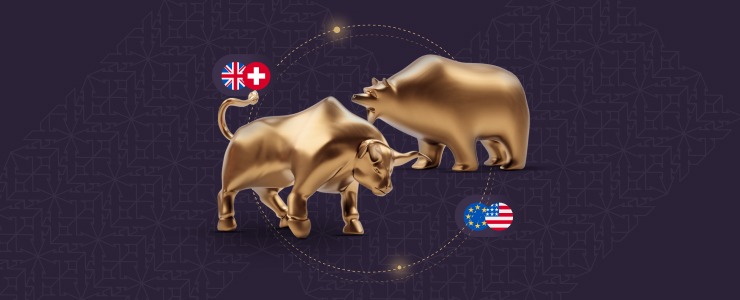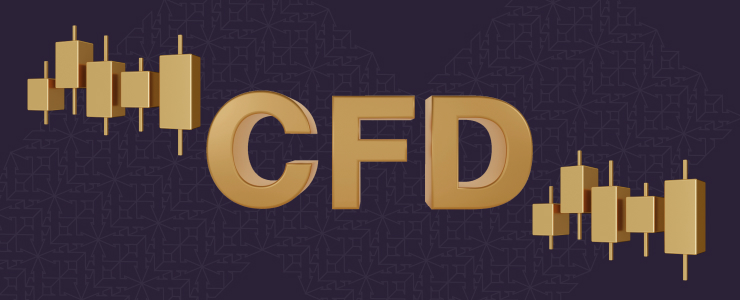The foreign exchange market, more commonly known as Forex or FX, is the largest and most easily converted asset market on Earth. Have you travelled to a different nation and swapped your money for the local type? Then you took part in Forex without knowing.
What is Forex precisely? How does Forex function and why is it vital? This guide will describe it in detail.
What is forex?
Forex, short for « foreign exchange, » is the global market in which currencies are traded. It is basically open for business all day, five days per week, enabling people, banks, firms along with governing bodies to perform currency exchanges.
In contrast to equity markets, Forex lacks a core exchange. Trading happens online, over the counter, through a web of banks, financial organisations and individual dealers across the globe.
Currencies are always traded in pairs, meaning that when you buy one, you sell another at the same time. For example, if you trade EUR/USD you acquire euros as you sell US dollars.

Why is forex important?
The global economy relies on foreign exchange. It allows for:
- Worldwide trade and investment, since companies require foreign exchange to purchase and offer items with differing currencies.
- Central bank activity, since governments and central banks employ foreign exchange to bring stability to their economies.
- Speculation, since traders purchase and sell currencies to utilise cost changes and generate revenue.
- Risk mitigation, since firms and bankers use foreign exchange to protect themselves from currency changes that could impact their gains.
The importance of the foreign exchange market is very high! It serves as the base of international commerce.
How does forex trading work?
Forex trading involves predicting whether one currency will strengthen or weaken against the other. To do this, all traders use the following:
- Currency pairs. All trades involve two currencies, like GBP/USD (British Pound vs. US Dollar).
- Bid and ask price. The « bid » is the price traders are willing to pay for a currency, while the « ask » is the price sellers want.
- Leverage. Traders can borrow money to trade larger amounts than they have in their account, increasing potential profits (and risks!).
- Market participants. Central banks, hedge funds, corporations, financial institutions, governments and individual traders all play a role in Forex.
Forex trading happens through brokers and trading platforms like Xlence, where traders analyse charts, place trades, and manage risk.

How do currency pairs work?
Currencies are traded in pairs meaning that buying one currency requires selling another at the same time. The most common combinations are these:
- Major pairs. These see the highest trade volume around the globe. Examples are EUR/USD, USD/JPY, GBP/USD and USD/CHF.
- Minor pairs. These trade with less volume. These pairings, such as EUR/GBP and AUD/JPY, remain important.
- Exotic pairs. These combine one major currency and one from an up-and-coming market. One instance is USD/TRY (US Dollar compared against the Turkish Lira).
Getting to know the currency pairings is very, very important for sound trade decisions.
What moves forex prices?
Forex prices change based on several things such as economic basics, central bank actions and market sentiment along with geopolitical events across the world.
Interest rates are very important. When a central bank increases them, the currency often gets stronger. Investors want better returns, so when rates drop, currencies often weaken. GDP increase, employment… also change a currency’s worth. They show how healthy the economy is at the moment.
Supply and demand also cause shifts. If institutions and traders favour a currency, its value will go up. If they sell, the value goes down. Events related to world politics often result in investors going to safe currencies, like the USD or JPY. Speculation also adds to the fluctuations of volatility. Hedge funds and big investors that will trade a lot are always studying the news and doing technical work, as well as checking market trends.
Forex, at the end of the day, is a market that moves fast and is always changing its form, making it, sometimes, an unpredictable force. Nonetheless, it takes time to get better, like everything else in life.
Forex trading strategies
Each person who trades approaches the forex market in a different manner and there is not a single best way to do it. Some like short-term quick trading, while others use a more patient, long-term strategy. Being aware of the most frequent forex plans can be helpful for someone to decide the right fit for risk management.
One of the most well-known ways is day trading. With this, traders purchase and sell currency pairs in a single trading day. This plan attempts to earn from short-term price shifts. This takes a strong grasp of market trends, being able to handle several trades with efficiency. It is good for traders who like active, hands-on trading but it requires focus and experience.
For people seeking a balance between short and long-term trading, swing trading may be a better choice. Swing traders hold positions for days or even weeks, as they seek to earn from medium-term price changes. In comparison to day trading, swing trading allows for more flexibility, which makes it a good choice for those who can’t always watch the markets yet still want to do strategic trading.
Scalping, Trend Following, and Breakout Trading Explained
A different method is scalping, meaning making several small trades in minutes and earning from small price changes. Scalpers depend on high trading volume and precise actions to achieve profit margins. While this plan can be rewarding, it needs deep market data and knowledge.
For traders with a longer projection plan, trend following could be an interesting choice. This involves identifying and capitalising on extended price trends, be they bullish or bearish. Trend traders employ data and historical info to decide when to start and exit trades. Trend following is less intensive but still very analytical.
Lastly, breakout trading focuses on placing trades when prices break through significant support or resistance levels. This strategy theorises around the idea that once a price breaks past a certain level, it often continues moving in that direction with momentum. Breakout trading is common for traders wanting to generate revenue from large market ups and downs.

Final concepts and forex trading risks
Forex trading presents multiple opportunities, but it also has considerable risk that every trader should be aware of. Market volatility presents one of the biggest hardships, and sudden price changes could cause unexpected losses. The forex market is very dynamic, and you must prepare for it.
Another important concept is leverage. This allows a trader to control positions using a small quantity of funds. Leverage could amount to profits, but it can also produce deficits. Some methods to manage risk can be put in place, like stop-loss orders.
Finally, emotional trading represents another risk when it comes to forex. Rushed choices are never recommended, because they can result in bad decisions, putting yourself at risk. Making disciplined trading plans and following them may be the way to go to avoid emotional reactions to market fluctuations.
Disclaimer:This information is not considered investment advice or an investment recommendation, but instead a marketing communication.




